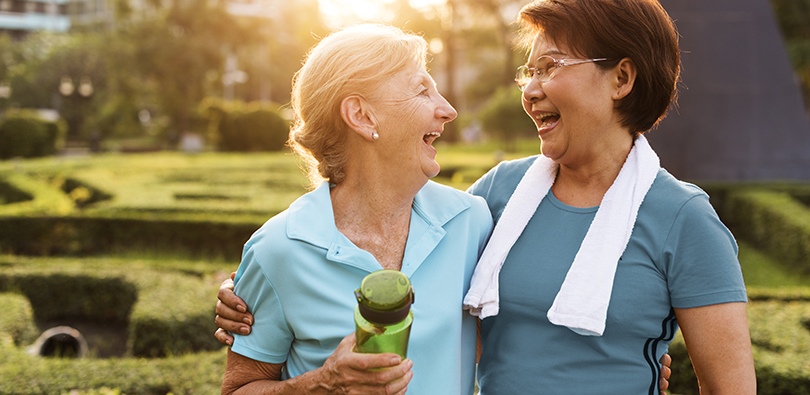
As we age, our bones lose strength, but research at the National Centre for Sport and Exercise Medicine has shown that just five minutes of exercise each day may benefit hip strength in postmenopausal women. Research conducted at Loughborough University asked a group of postmenopausal women to complete up to 50 hops at home each day over the course of six months.
The women hopped on the same leg each day and bone scans were taken before and after the intervention. Over the six months, the bone density increased in the hopping leg compared to a decrease in the non-exercise leg.
Dr Katherine Brooke-Wavell, a senior lecturer in Human Biology in the University’s School of Sport, Exercise and Health Sciences, explained: “There are over 79,000 hip fractures in the UK each year, with hospital costs at £1130 million. Postmenopausal women are at a particularly increased risk of low bone density and fracture.
“This research demonstrates that in healthy women, a brief home-based exercise that requires no specialist equipment can increase bone density at the hip and potentially reduce the risk of hip fracture.”
In addition to measuring the effect of the exercise on bone density, the team also took MRI scans of the participants’ knee joint to investigate any signs of damage resulting from the exercise.
Chris Hartley, PhD student at the University, said: “We know that many people are concerned about the health of their joints and how safe it is to take part in physical activity, particularly high-impact exercise. We found no detrimental effects of the hopping on several indicators related to knee osteoarthritis.”
The team hopes that the findings will help to promote physical activity in older populations.
“The Royal Osteoporosis Society has recently released guidelines encouraging physical activity and this study adds to that growing body of research,” added Dr Brooke-Wavell.
“Our study was carried out with healthy women aged 55-70 who had no existing injuries and the results demonstrated that high impact exercise is effective in increasing bone mass. Hopping may not be for everyone, however, and we encourage people to consult the guidelines for advice on what is the best exercise to carry out.”
The full results of the study are published in the current issue Journal for Bone and Mineral Research and can be found here.
For more information on exercise and physical activity for bone health please visit the Royal Osteoporosis Society website.